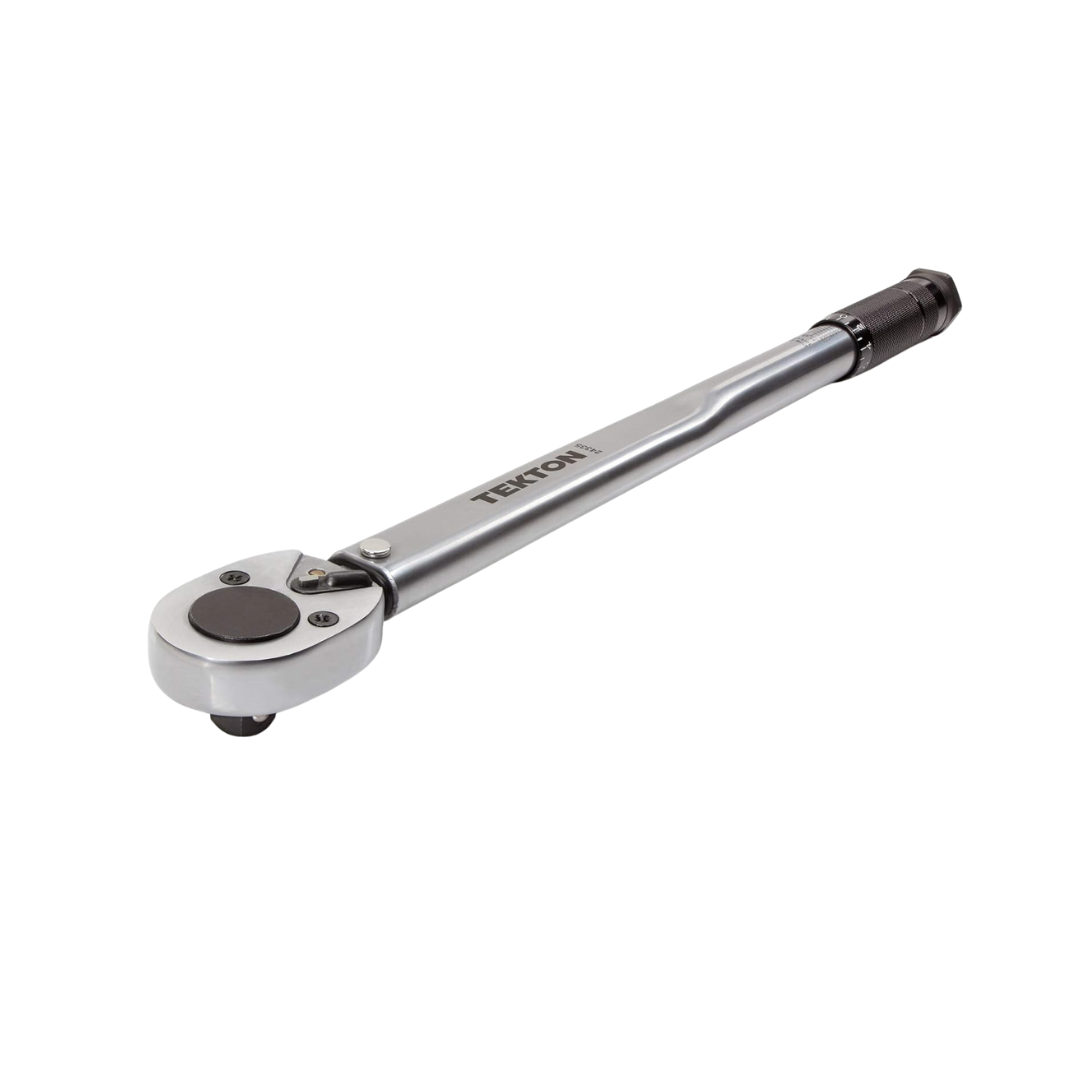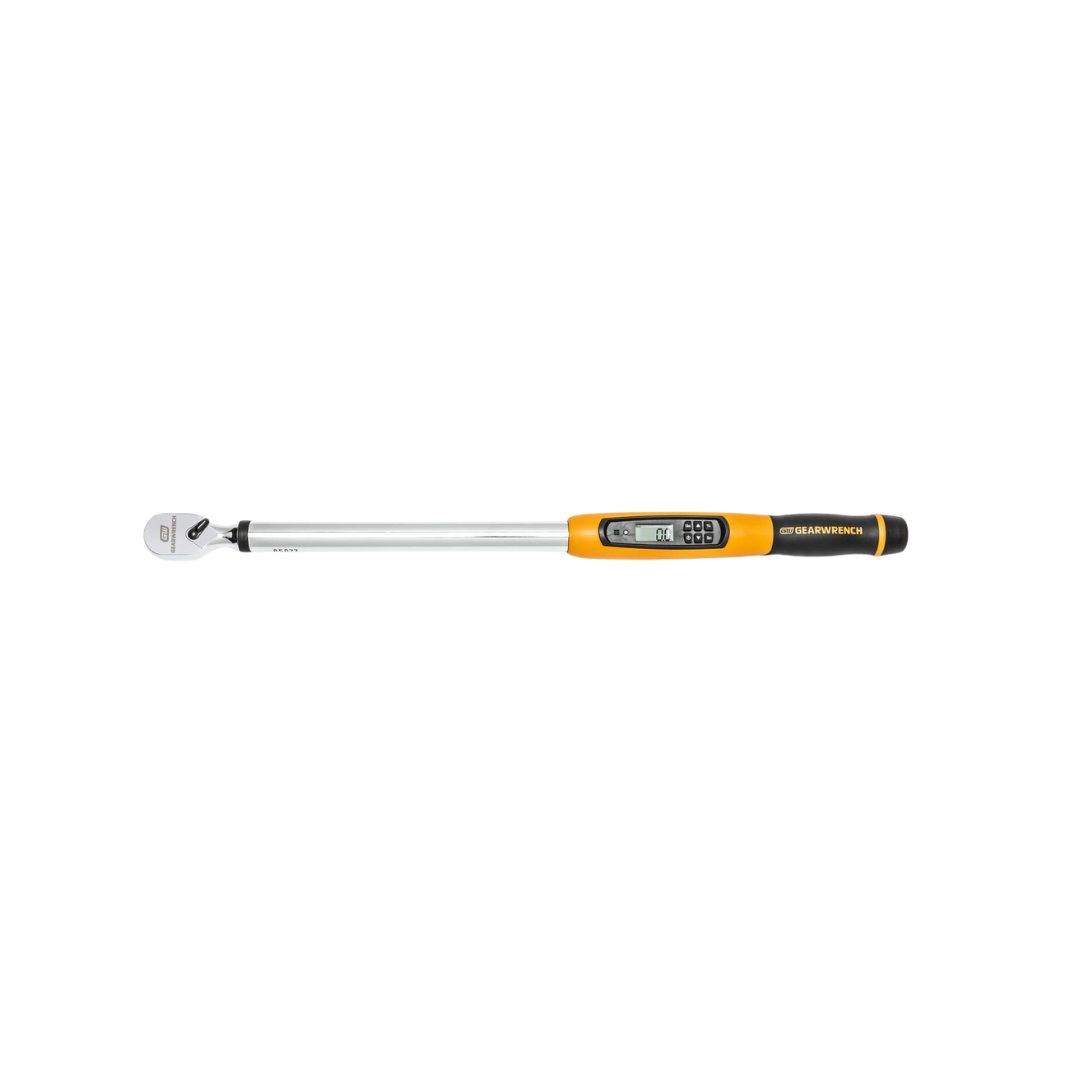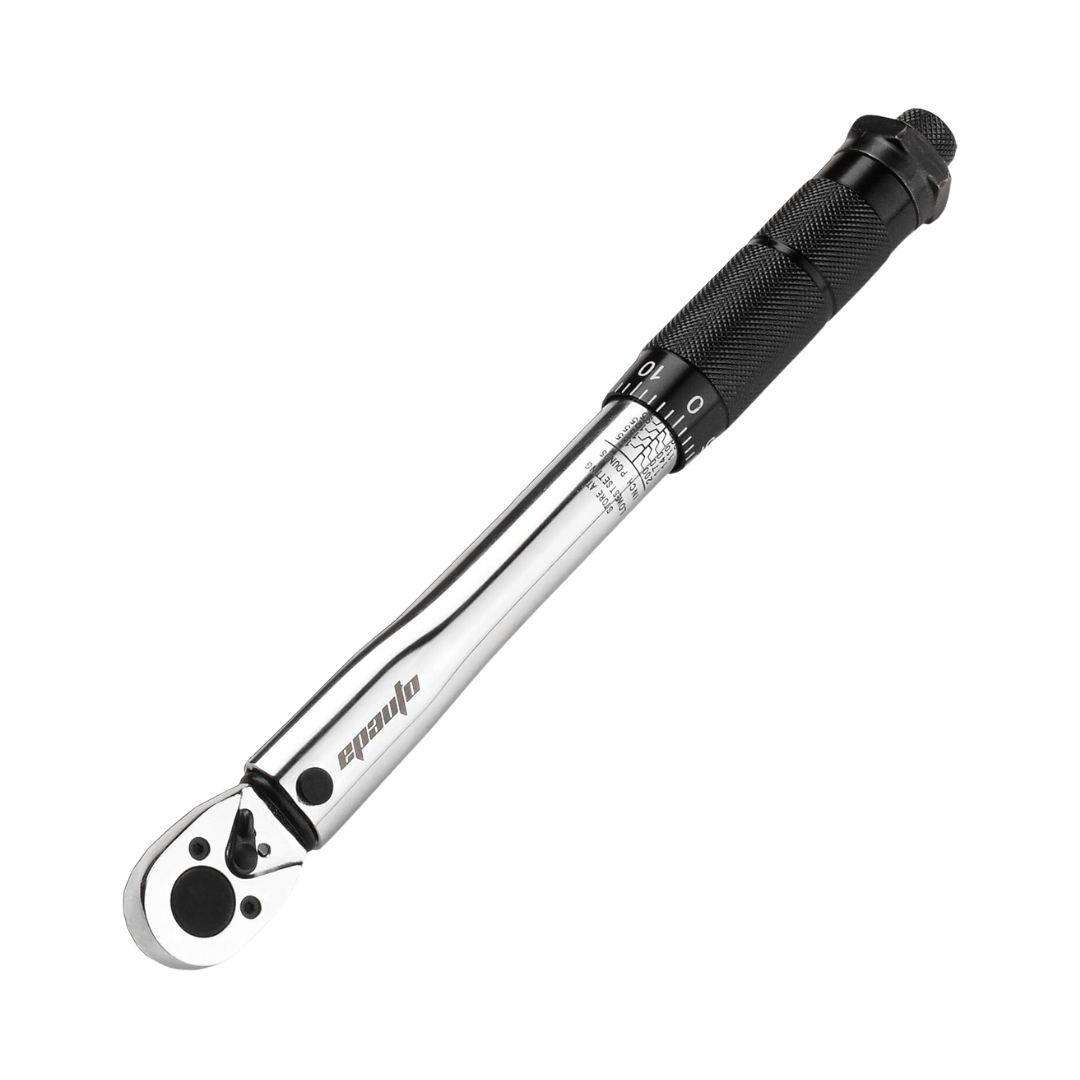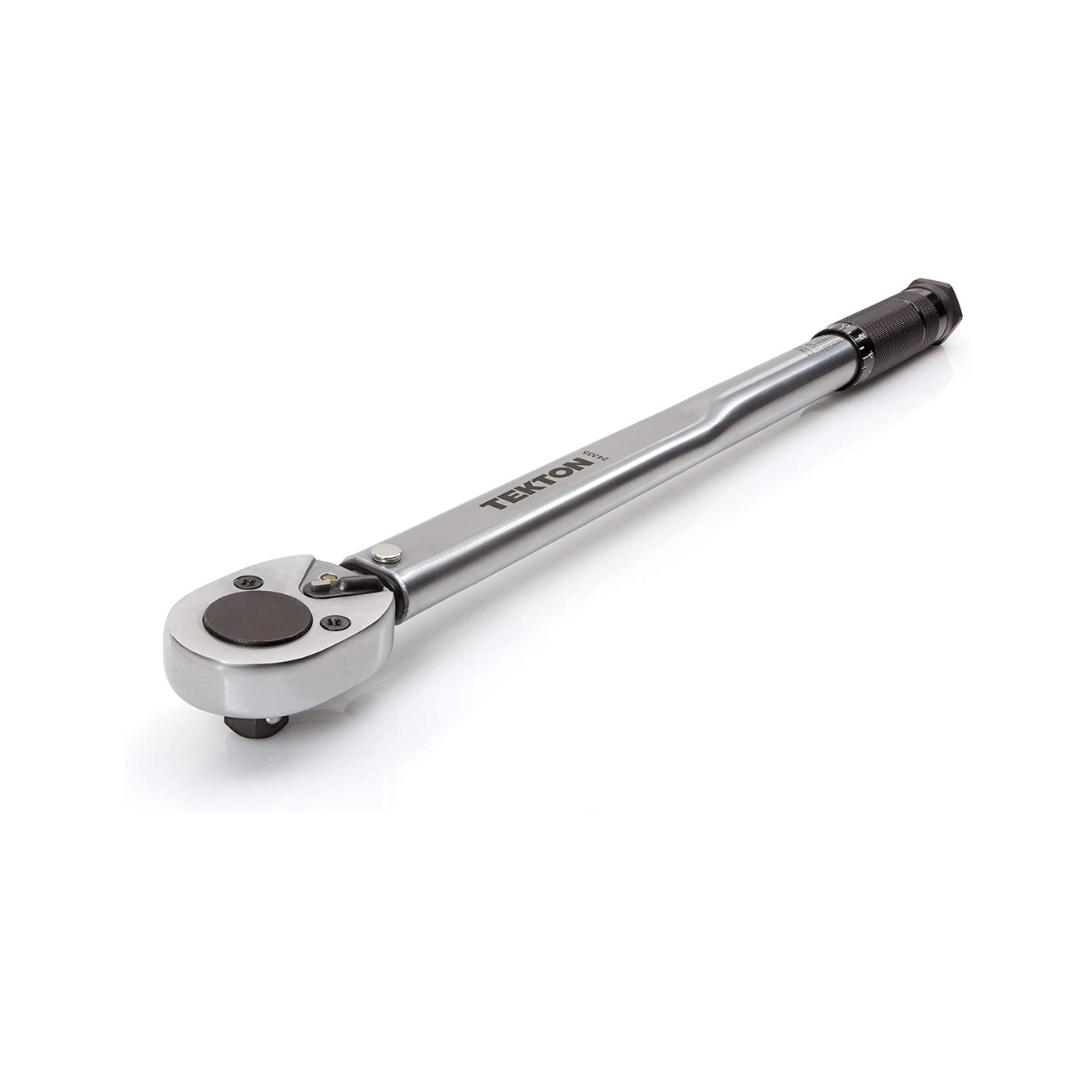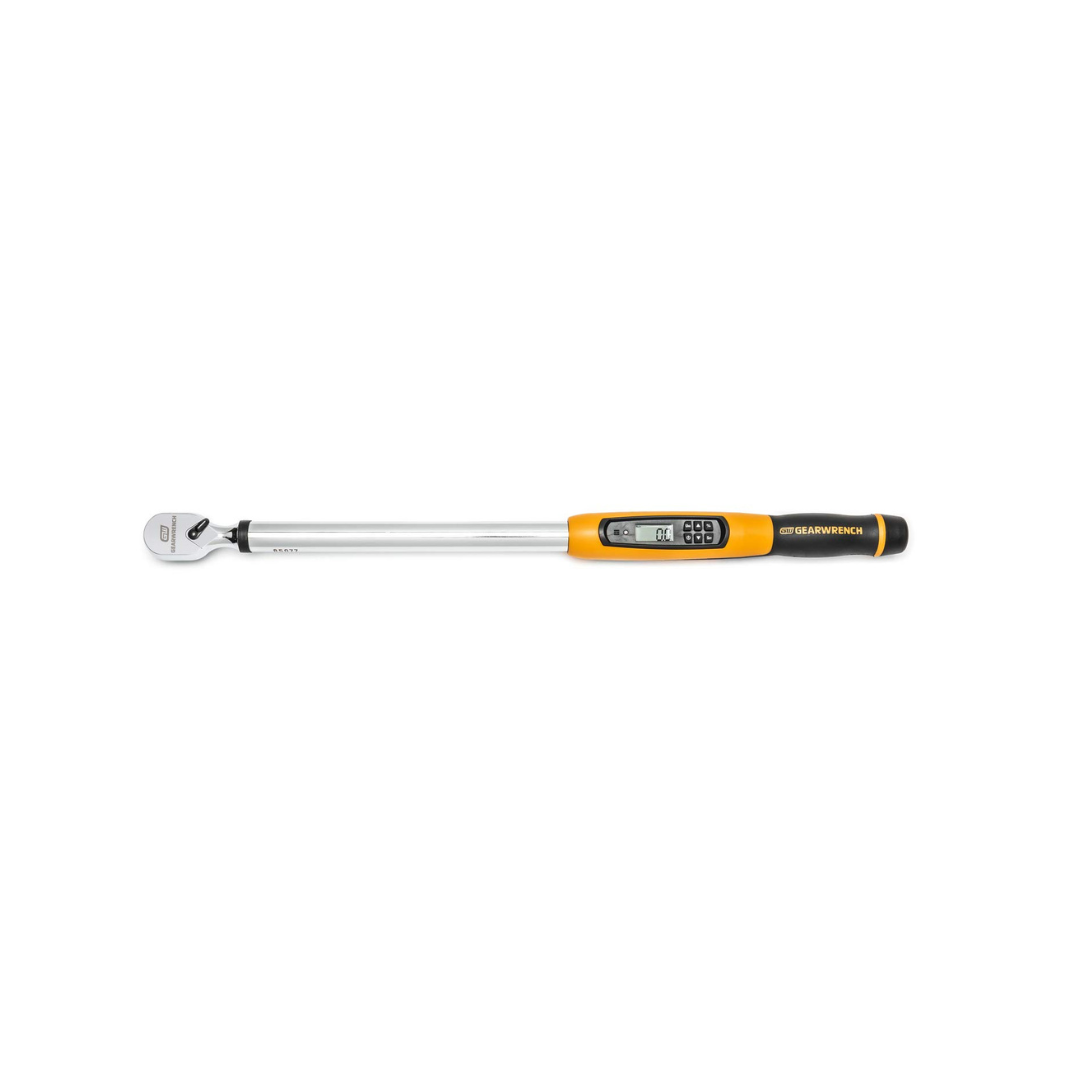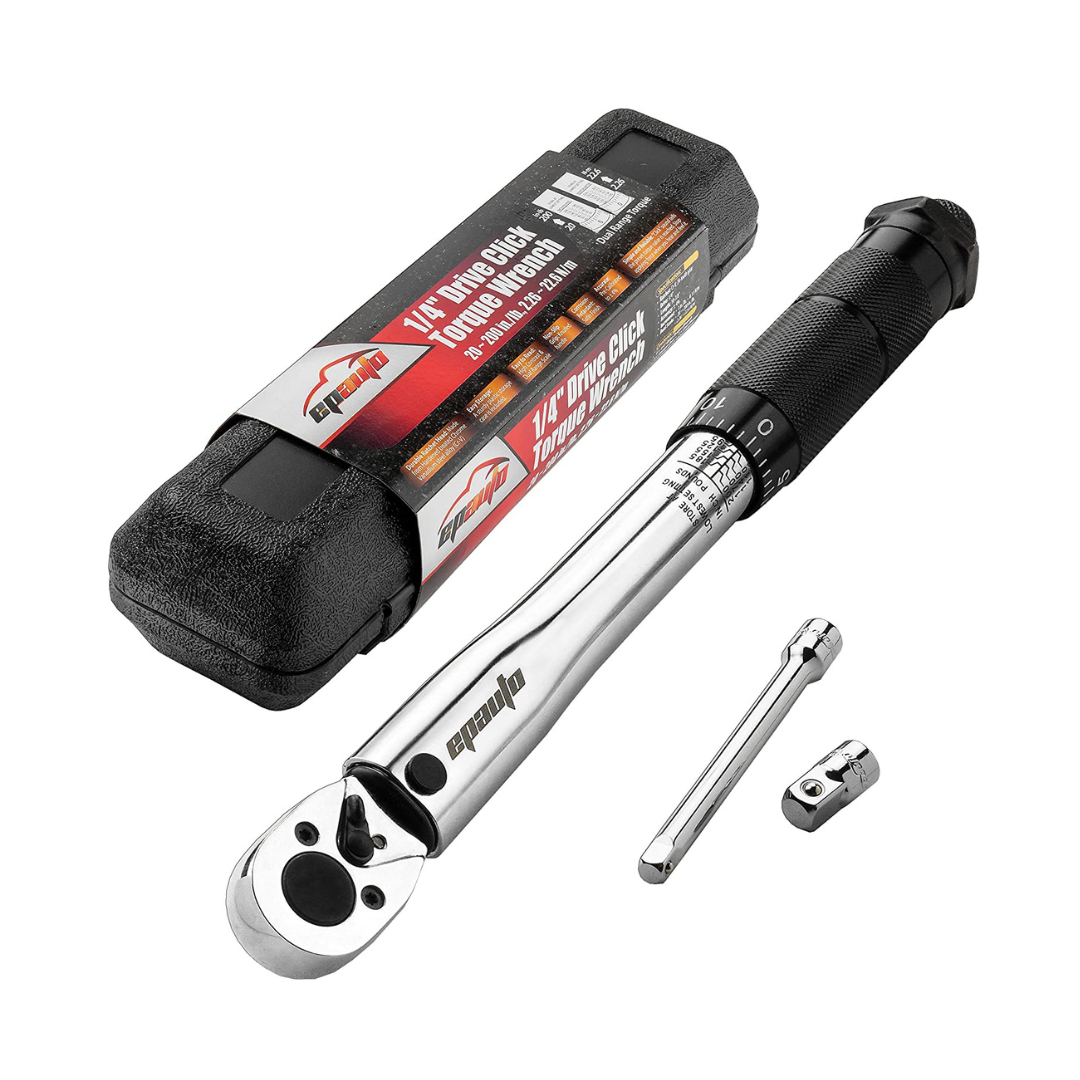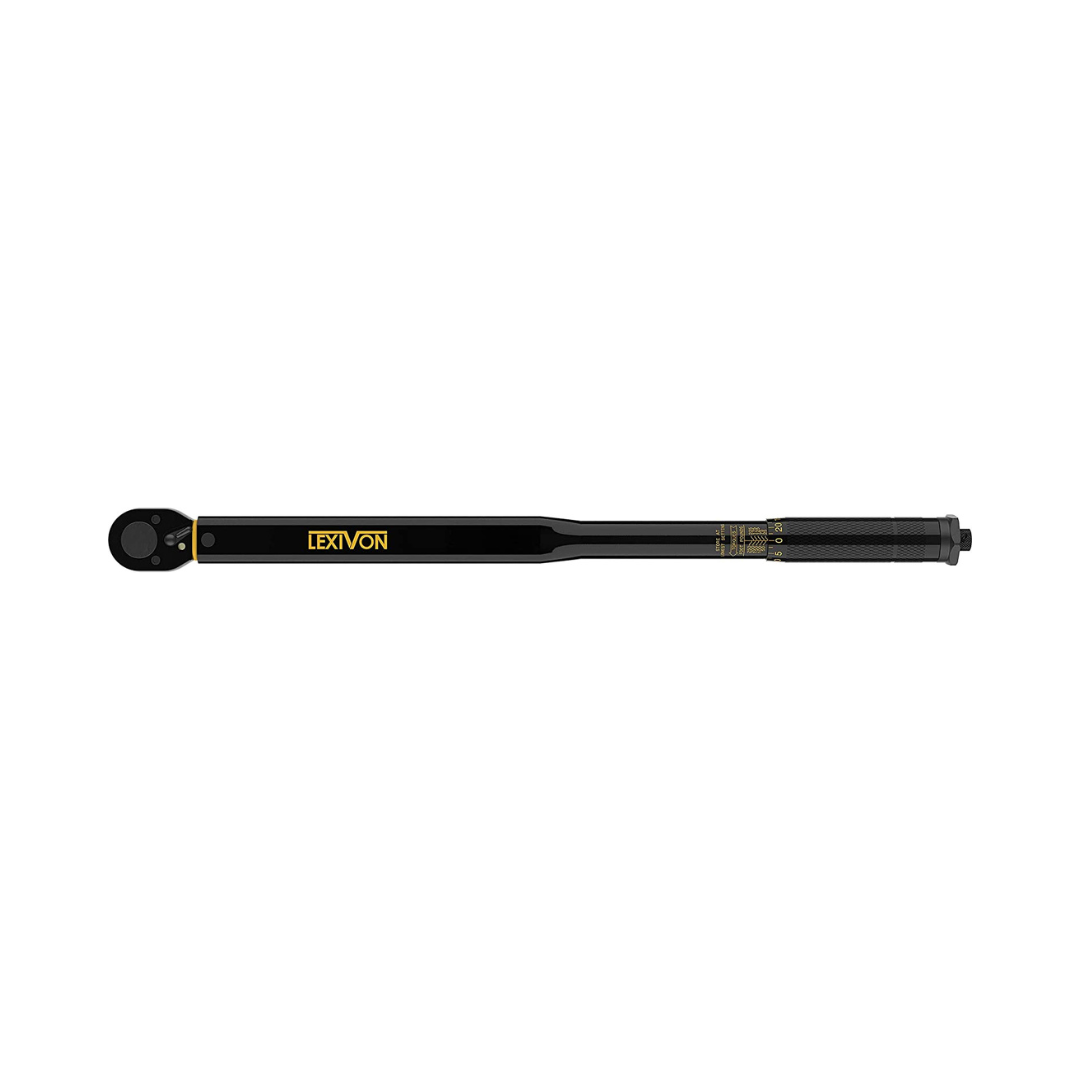We may be compensated if you purchase through links on our website. Our team is committed to delivering honest, objective, and independent reviews on home products and services.
Torque wrenches allow DIYers to tighten fasteners using the correct torque, preventing the risk of under- and overtightening. The This Old House Team has selected the best torque wrenches on Amazon to help with all of your DIY projects. Read our review to learn about them and check out our tools buying guide for more tool-buying tips.
Top 4 Torque Wrenches
- Best Case: TEKTON ½-Inch Drive Torque Wrench
- Best Electronic Wrench: GEARWRENCH ½-Inch Drive Electronic Torque Wrench
- Best ¼-Inch Wrench: EPAuto ¼-Inch Drive Click Torque Wrench
- Best Calibration: LEXIVON ½-Inch Drive Click Torque Wrench
Compare Top Torque Wrenches
| Product | Type | Weight | Drive Size | Range | Accuracy |
|---|---|---|---|---|---|
| TEKTON ½-Inch Drive Torque Wrench | Click wrench | 2.94 pounds | 1/2 inch | 10-150 inch pounds | Within 4% |
| GEARWRENCH ½-Inch Drive Electronic Torque Wrench | Digital wrench | 5.19 pounds | 1/2 inch | 25.1–250.8 inch-pounds | Within 2% |
| EPAuto ¼-Inch Drive Click Torque Wrench | Click wrench | 1.74 pounds | 1/4 inch | 20-200 inch pounds | Within 4% |
| LEXIVON ½-Inch Drive Click Torque Wrench | Click wrench | 6.4 pounds | 1/2 inch | 25-250 inch pounds | Within 4% |
| Product | Type | Weight | Drive Size | Range | Accuracy |
Best Case
Pros and Cons
✔ Includes a dual-range scale that’s easy to read in low lighting
✔ Comes with a reversible ratchet head that can drive in both directions
✔ Includes an operations manual with a torque conversion chart
✘ Some reviewers received a scratched product
✘ Some customers said that the return period was too short to accurately test the product
What Customers Are Saying
Customers praised this wrench’s durable composition and the company’s excellent customer service. Multiple customers who received an inaccurate or otherwise faulty product were contacted by the company to get a replacement. Customers who weren’t satisfied with this torque wrench complained that it wasn’t accurate within 4% at the lower end of the range.
Best Electronic Wrench
Pros and Cons
✔ Has an accuracy rating within 2%
✔ Includes a 72-tooth ratchet that works even in tight spaces
✔ Has an oil- and solvent-resistant handle to improve the life of your wrench
✘ Offers limited drive size options
✘ More expensive than manual models
What Customers Are Saying
Featuring both visual and auditory cues, customers found it virtually impossible to apply too much torque when they were using this wrench. However, some customers complained that the wrench used too much power, requiring them to change the batteries frequently.
Best ¼-Inch Wrench
Pros and Cons
✔ Sold at an affordable price
✔ Weighs less than two pounds, making it light enough for anyone to use
✔ Makes a clicking noise to indicate when your desired torque has been reached
✘ Has some reviews claiming that its torque setting was difficult to adjust
✘ Snapped bolts for some users
What Customers Are Saying
From the product reviews we read, several praised the sturdy composition of this torque wrench, which allowed it to last for years despite its lower-than-average price point. However, many users complained about the calibration of this wrench, which they claimed was inaccurate.
Best Calibration
Pros and Cons
✔ Has a large range of 15–250 foot-pounds
✔ Comes in other sizes with different ranges
✔ Composed of heat-treated chrome vanadium
✘ Has a smaller handle that some users said was difficult to operate
✘ Some reviews claimed that the wrench broke shortly after purchase
What Customers Are Saying
Customers praised the flexibility of this wrench’s head, which fit a range of nuts and bolts. The most common complaint from dissatisfied customers was related to the product’s click feature, with multiple users saying that they weren’t able to hear or feel the “click” that signified that the desired torque had been reached. This caused them to apply too much force.
Buyer’s Guide
In addition to the type, you’ll also want to consider a torque wrench’s drive size, unit of measurement, accuracy, and ease of use before deciding which one to add to your tool kit. This buying guide explores each of these factors to help you make an informed purchasing decision.
Type
There are five main types of torque wrenches.
- Click: This is the most common type of torque wrench. It makes an audible click sound when the required torque has been reached. It’s easy to use and durable, but some people use it incorrectly. Instead of stopping at the first click, some people tighten the fastener too much by waiting until the wrench clicks a second time.
- Break-over: This is similar to a click wrench, but it has a hinged section, typically near the socket head, that “breaks” when the torque is reached. Break-over torque wrenches make it difficult to accidentally overtighten the fastener, but it is possible.
- Cam-over: This type of torque wrench has a built-in mechanism that releases pressure as soon as the torque is reached, preventing you from overtightening.
- Dial: Dial wrenches look like click wrenches with an analog dial on them. Instead of the wrench alerting you when it’s reached the desired torque, you’ll have to read the dial for your torque measurement.
- Digital: This type of torque wrench is fairly new to the market. It has an LCD screen that tells you what the torque is. Additionally, when you reach the desired torque, the tool beeps or flashes to alert you. Digital torque wrenches can be accurate up to four decimal places and can sometimes store old readings. However, they don’t stop the user from overtightening—the user has to stop themselves once they hear the beeping or see the flashing.
Drive Size
Drive size refers to how big the piece that fits over the fastener is. A ½-inch drive is common for automotive use, but manufacturers also make ¼-inch, ¾-inch, and ⅜-inch sizes. Measure the size of the fasteners you’re using for your project before purchasing a torque wrench.
Measurement
Torque is usually measured in foot-pounds on the imperial scale or Newton-meters on the metric scale. Occasionally, you’ll find a torque wrench that’s measured in inch-pounds or kilograms per centimeter. A mechanical torque wrench will have one or two of these measurements, but a digital one might have all of them.
Accuracy/Range
The accuracy of a torque wrench will be stated as Full Scale (FS) or Indicated Value (IV). FS tells you the allowable error over the full range of the tool, while IV tells you the allowable error at the stated value. Wrenches that use IV measurements are more accurate.
It’s also important to note that accuracy for a click wrench isn’t quoted over the tool’s whole range. It’s common for it to only be quoted between 20% and 100%. For example, if a torque wrench has a range of 25-250 feet, it might only achieve its stated accuracy starting at 45 feet, which is 25% of the range.
Handle
Torque wrenches with longer handles have a more ergonomic design that allows you to maintain more control and apply pressure more evenly. Sometimes, handles will have plastic or rubber grips on them to prevent the tool from slipping out of your hand during use.
Frequently Asked Questions
Do torque wrenches require maintenance?
Torque wrenches are durable tools, so they don’t require a lot of maintenance. However, most tool manufacturers recommend keeping your torque wrench clean and not dropping it. They also said to store it in a separate storage case to prevent collision with other tools and to recalibrate it about once a year.
How do I convert foot-pounds to Newton-meters?
Follow these rules to convert foot-pounds to Newton-meters or Newton-meters to foot-pounds:
- 1 foot-pound is equal to 1.3558 Newton-meters
- 1 Newton-meter is equal to 0.73776 foot-pounds
What are preset and deflecting beam torque wrenches?
The torque wrench that you’re most familiar with is called a micrometer torque wrench, and it looks like a ratchet-drive socket wrench. However, there are two other types of torque wrenches:
- Preset: These wrenches have a preset torque level, so they can’t be adjusted. They’re usually small enough to fit in the palm of your hand but may have a low torque.
- Deflecting beam: Beam-style torque wrenches have, a beam runs from the head where the socket is attached to the grip where a scale is located. The deflection of the beam indicates the amount of torque.
Why Trust The This Old House Team
This Old House has empowered homeowners for more than four decades with top-notch home improvement content in the form of television programs, print media, and digital content on its website and social media platforms. The This Old House Team focuses on creating in-depth product and service review content to help inform your purchasing decision for just about any item or resource that you might need for your home. The This Old House Team has written over 1,000 reviews on products in the home space, from cordless drills to kitchen trash cans, lawn mowers, and dining room decorations.
We recommend products in each review using an intensive research process, spending hours combing through the best available models on Amazon. For a product to make our list of top picks, it must hold a solid sales record on Amazon, have consistently positive customer reviews, and offer unique features, among other factors. After narrowing down our list of recommendations, we conduct additional research and sometimes in-person testing to ensure that the products meet our standards. Once we conclude the research phase, we craft a well-rounded, user-friendly article that includes our recommended products and additional information to help homeowners like you make the right purchase.
To share feedback or ask a question about this article, send a note to our team at reviews@thisoldhousereviews.com.
